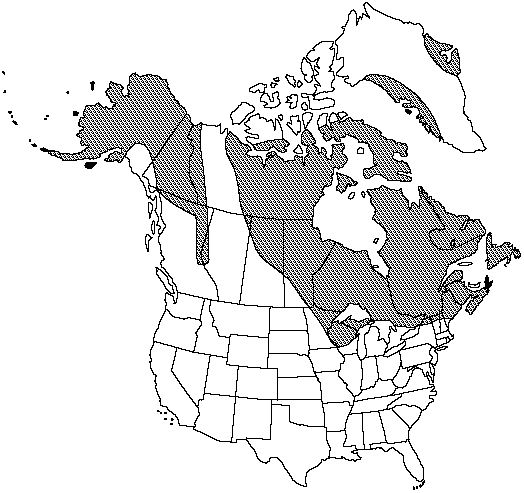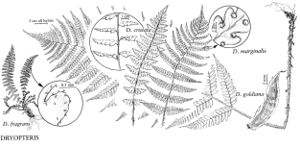Dryopteris fragrans
Gen. Fil. plate 9. 1834.
Leaves monomorphic, green through winter, 6–40 × 1–6 cm, old leaves persistent as gray or brown conspicuous clump at plant base (only in this species). Petiole 1/3 length of leaf, scaly throughout; scales dense, brown to red-brown. Blades green, linear-lanceolate, pinnate-pinnatifid to 2-pinnate, papery, densely scaly (only in this species) abaxially, glandular, aromatic when handled (only in this species). Pinnae ± in plane of blade, linear-oblong; basal pinnae linear-oblong, much reduced, basal pinnules longer than adjacent pinnules, basal basiscopic pinnule and basal acroscopic pinnule equal; pinnule margins crenately toothed. Sori midway between midvein and margin of segments. Indusia glandular. 2n = 82.
Habitat: Shaded cliffs and talus, often of limestone
Elevation: 50–1800 m
Distribution

Greenland, Alta., B.C., Man., N.B., Nfld. and Labr., N.W.T., N.S., Nunavut, Ont., Que., Sask., Yukon, Alaska, Maine, Mich., Minn., N.H., N.Y., Vt., Wis., Europe in n Finland, Asia in n, nw former Soviet republics.
Discussion
Dryopteris fragrans is a northern species and is not closely related to the other species in North America. The only hybrid known to involve D. fragrans is with D. marginalis, producing D. × algonquinensis D. Britton.
Selected References
None.
